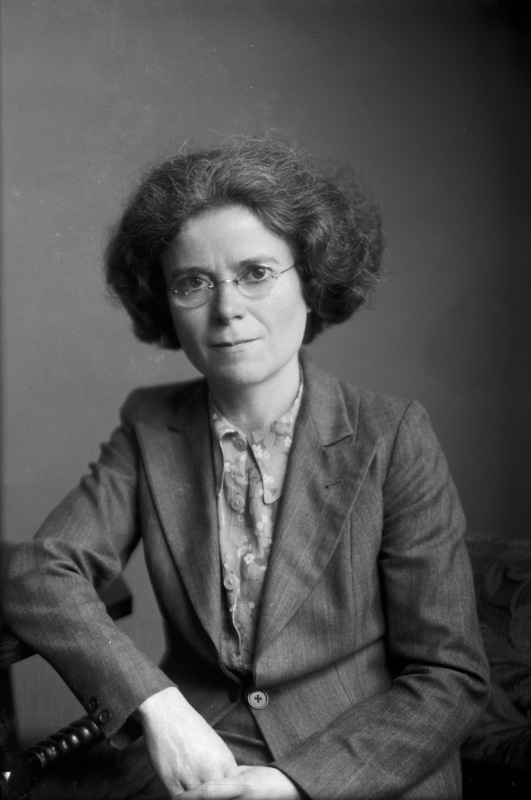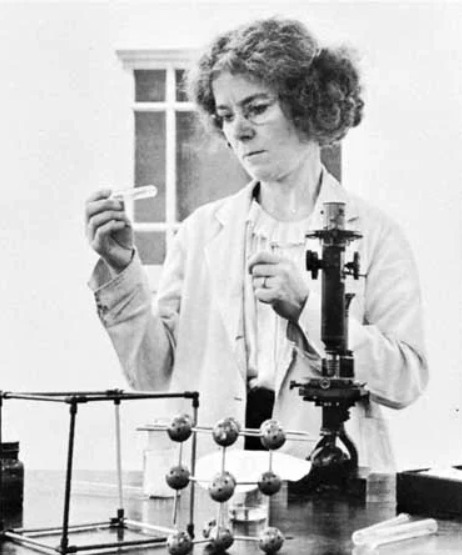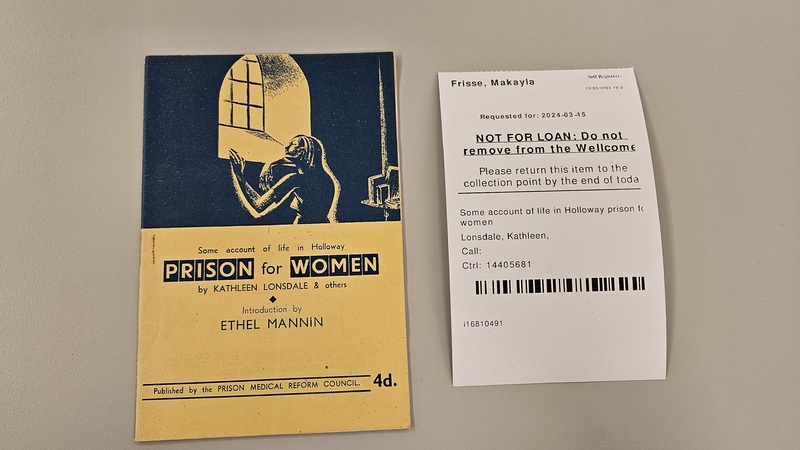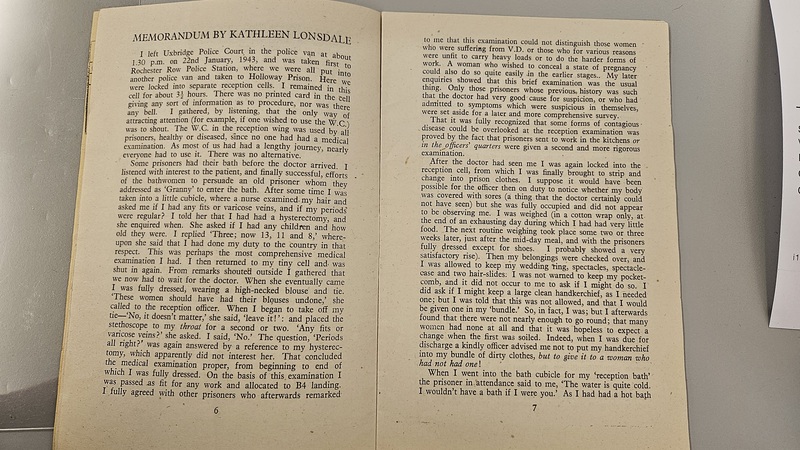
The Life and Legacy of Kathleen Lonsdale
Makayla Frisse, Spring 2024
Dame Kathleen Yardley Lonsdale (1903-1971), born in Newbridge, Ireland, is most well known for her work as a chemist. She is credited with proving the structure of the benzene ring as well as helping prove the existence of molecular orbitals. Beyond this, she built an international legacy as an activist for prison reform and world peace.
In her personal life, Lonsdale had a supportive husband that helped raise their three children when her scientific work was demanding. The advancement of women in science was also very important to Lonsdale, as she had to attend a boys’ school to take chemistry, physics, and mathematics, as those subjects were not offered at the girls’ school. At just 16, she was accepted to the Bedford College for Women, graduating in 1922 with the highest grades earned in a decade. It was there that she met one of the founders of x-ray crystallography and Nobel Prize winner William Henry Bragg. She got into the field when she started working for him after graduation (Robinson 2015).
Lonsdale's experimental methods were novel during her time. When she discovered the planar structure of the benzene ring, it was the first time that the atomic positions had been found without any prior assumptions about the molecule (Lonsdale 1928). That particular problem had puzzled scientists for years. Around this time, Lonsdale completed a major contribution to the field: the International Tables for X-ray Crystallography, which to this day are considered essential references in crystallography (Payne 2023). She later returned to the Royal Institution to continue research with Dr. Bragg, only to realize there was no x-ray equipment. However, she “made do” with an outdated electromagnet, which resulted in her proving the difference between sigma and pi electronic orbitals. This helped establish the existence of molecular orbitals, which are an integral part of modern chemistry and quantum mechanics (Robinson 2015).
In 1943, Lonsdale’s path took an unexpected turn, and she had one of the most influential experiences in her life. She got sent to jail. Having grown up during the horrors of the first World War, she had an anti-war ideology. When World War II broke out, she became active in her community and even sheltered refugees (Robinson 2015). However, she would not cross the line of becoming part of the war itself, and refused to participate in the civil defense service. She also refused to pay the resulting fine, which landed her in Holloway Prison for Women. There, she was inspired by womens’ stories, yet perturbed by the living conditions. This led her to compose a booklet detailing her own experience in Holloway, along with the accounts of several other women. Lonsdale records the state of her cell when she arrived as being covered in dirt and with feces on the ground from the previous inmate. The women were expected to be ‘clean and neat,’ at all times, but were not provided with basic hygiene products such as hairbrushes, or adequate amounts of soap or toilet paper, with women reportedly ripping pages out of their bibles as a substitute. They were also only allowed to bathe once per week, and the prison night gown that Lonsdale was given was stained with dirt and blood from the previous owner. The medical care available was especially poor. Lonsdale recounts an “examination” consisting of a nurse lining up prisoners, asking, “Are you alright?” to each one, and that is all. Pregnant women did not receive proper care; like the rest of the prisoners, they were only allowed out of their cells for exercise for up to one hour per day. If the woman had anything else to accomplish, such as visiting a doctor or meeting with the warden, it took up her only ‘free’ hour of the day. They were also given only the standard diet up until they were 6 months pregnant, after which they would receive an extra two slices of bread and a pint of milk (Lonsdale 1943). It was through this that Lonsdale began to become a public figure and activist. When nuclear tensions rose in the 1950s, she wrote a book about peace and lectured on the topic. She felt responsibility for using scientific advancement for good, not harm.
Lonsdale made major contributions to both her scientific field and the political landscape of her time. She also made history by becoming the first woman to hold many roles, including a Fellow of the Royal Society in London, a tenured professor at the University College London, president of the International Union of Crystallography, and president of the British Association for the Advancement of Science, no doubt inspiring many young female scientists in her wake. In recognition of her work with crystals and minerals, she had a diamond-like material named after her in 1967. Lonsdaleite has a hexagonal carbon structure, and is even harder than diamond, which has a cubic carbon structure. It is very rare on Earth, but has been found in meteorites (Holcombe 2022). This honor came shortly before Kathleen Lonsdale passed away from cancer in 1971 (Milledge 1975). Her legacy lives on as a scientist, an activist, an author, a mother, and someone who truly made the world a better place.
Bibliography
Holcombe, Madeline. “Meet the Mystery Diamond from Outer Space.” CNN, Cable News Network, 16 Sept. 2022, www.cnn.com/2022/09/16/world/space-diamond-lonsdaleite-scn/index.html.
Lonsdale, Kathleen. “Some Account of Life in Holloway Prison for Women.” Prison Medical Reform Council, 1943.
Lonsdale, K. “The structure of the benzene ring.” Nature, vol. 122, no. 3082, Nov. 1928, pp. 810–810, https://doi.org/10.1038/122810c0.
"Obituary: Kathleen Lonsdale, 1903-1971” H. Judith Milledge, Acta Cryst. A31 (1975) 705.
Payne, Robin. “Biography - Dame Kathleen Lonsdale (1903 -1971).” ACAHistory, history.amercrystalassn.org/kathleen- lonsdale, 2023.
Acknowledgments
I would like to thank my instructors, Reagan Grimsley and Charlie Gibbons, and my pod members, Chloe Marini and Cecilia Duykers for making London so memorable. Funding for this Study Abroad class provided by the UAH Honors College.




